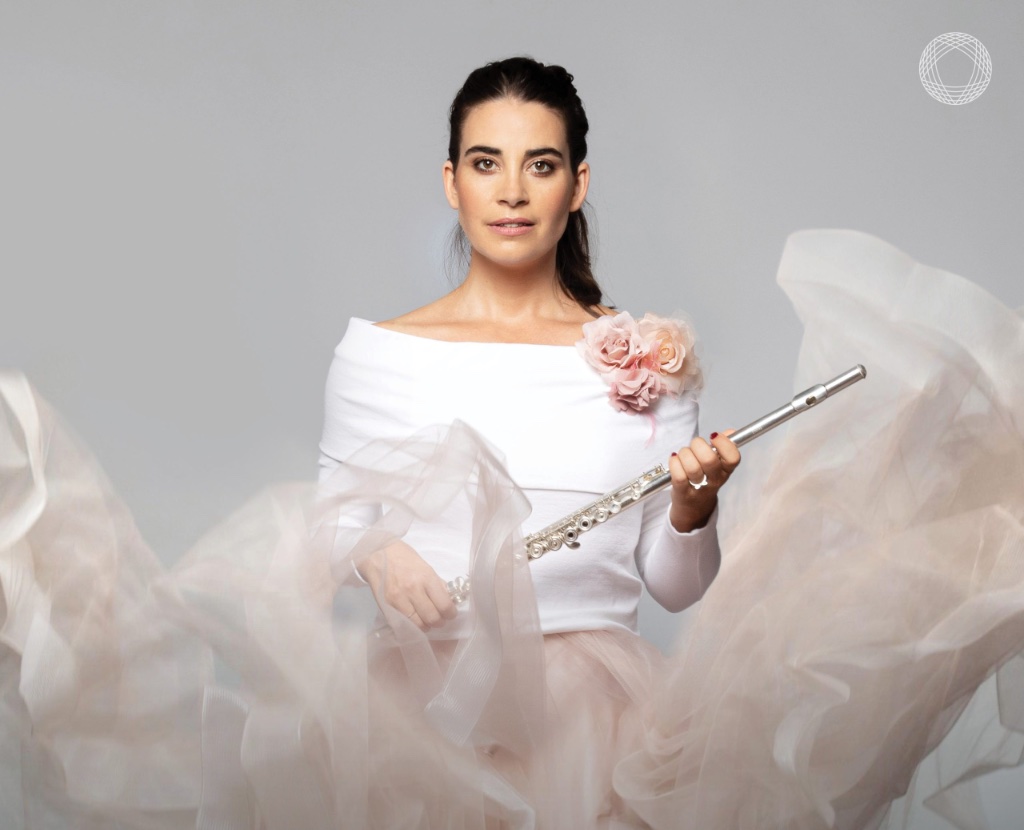
When an album with the title My Paris appeared on the list of newly released classical recordings, I felt it would be rude not to review it for Paris Update. Australian flautist Ana de la Vega, who was inspired by her love for the city where she had studied, at the Conservatoire Supérieur de Paris, teamed up with German pianist Paul Rivinius to record an eclectic array of pieces that celebrate the long-established tradition of flute playing in France. As de la Vega writes in a charming personal note attached to the album, “No other city has been so important to the development and history of a single instrument as Paris has been to the flute. Paris is flute. Flute is Paris.”
It therefore comes as a surprise that the album starts with and is dominated by pieces not even originally written for the flute. As pleasant as it is to listen to arrangements of such French classics as Debussy’s piano piece “Clair de Lune,” Fauré’s song “Après un Rêve” and Satie’s “Gymnopédies,” it feels like de la Vega missed an opportunity by not playing only music composed for her instrument. Indeed, to my ears, the recital only fully comes to life when she plays such pieces. Poulenc’s Sonata for Flute and Piano is the real highlight of the disc; both musicians negotiate with aplomb the shifts from the whimsical first movement to the achingly tender song-like second movement to the wonderful syncopations of the final movement.
Of the other music written for the flute, it was good to see a number of works by female composers, notably Cécile Chaminade’s virtuosic Concertino, and Lili Boulanger’s wistful “Nocturne.” While an arrangement of Mozart’s Sonata for Violin and Piano KV304 seems an oddity in the line-up of French music, it remains (marginally) relevant to the theme of the album, as it was composed in 1778 while Mozart was in Paris.
The recording, made with reverberant acoustics, makes the instruments sound somewhat distant until the flute assaults the eardrums with its highest, loudest notes; I would recommend listening to it on a loudspeaker rather than with earphones. De la Vega displays formidable technique and pure tone in her playing and is not afraid to make rougher sounds when she feels that they serve the music, a sure sign of a confident musician. I just wish she had shown more confidence in her choice of program.

Of other recently released French music, I would highly recommend Ravel: Concertos pour Piano-Mélodies, performed by pianist Cédric Tiberghien on an 1892 Pleyel instrument with the period orchestra Les Siècles, conducted by François-Xavier Roth. It is supplemented by a selection of songs for voice and piano, sung by baritone Stéphane Degout and accompanied by Tibegrhien.
Although the songs are delightfully performed, the high points for me are the two – very different – piano concertos by Ravel. The first, in G major, is infinitely more approachable for a general listener, starting with a fantasia on Basque folk songs and ending with a hugely athletic Gershwin-esque final movement (actually, this work predates both Gershwin’s piano concerto and Rhapsody in Blue, so it would be more accurate to call the Gershwin works Ravel-esque).
The meltingly beautiful middle movement is the most memorable, all the more moving for the fact that Tiberghien here maintains a rigor that prevents him from slipping into excessive sentimentality. I defy any listener to remain dry-eyed during the exquisite section where the cor anglais, played by Stéphane Morvan and accompanied by the piano, takes up the piano’s initial theme. Both musicians play beautifully.
The second piano concerto, in D Major, was composed as one continuous movement for the left hand. It was commissioned by the pianist Paul Wittgenstein (Ludwig’s brother), who lost his right arm in World War I. Such is the intricacy of Ravel’s writing and the extraordinary technique of Tibergien that one would hardly know that the piano is being played with only one hand.
In both concertos, Roth’s direction of Les Siècles is superb. Few orchestras and conductors performing today have such a symbiotic relationship, and it is very exciting to see them currently producing so many excellent recordings of French music.
Nick Hammond’s latest book, The Powers of Sound and Song in Early Modern Paris, is available in paperback and as an e-book here and from online vendors.
Favorite